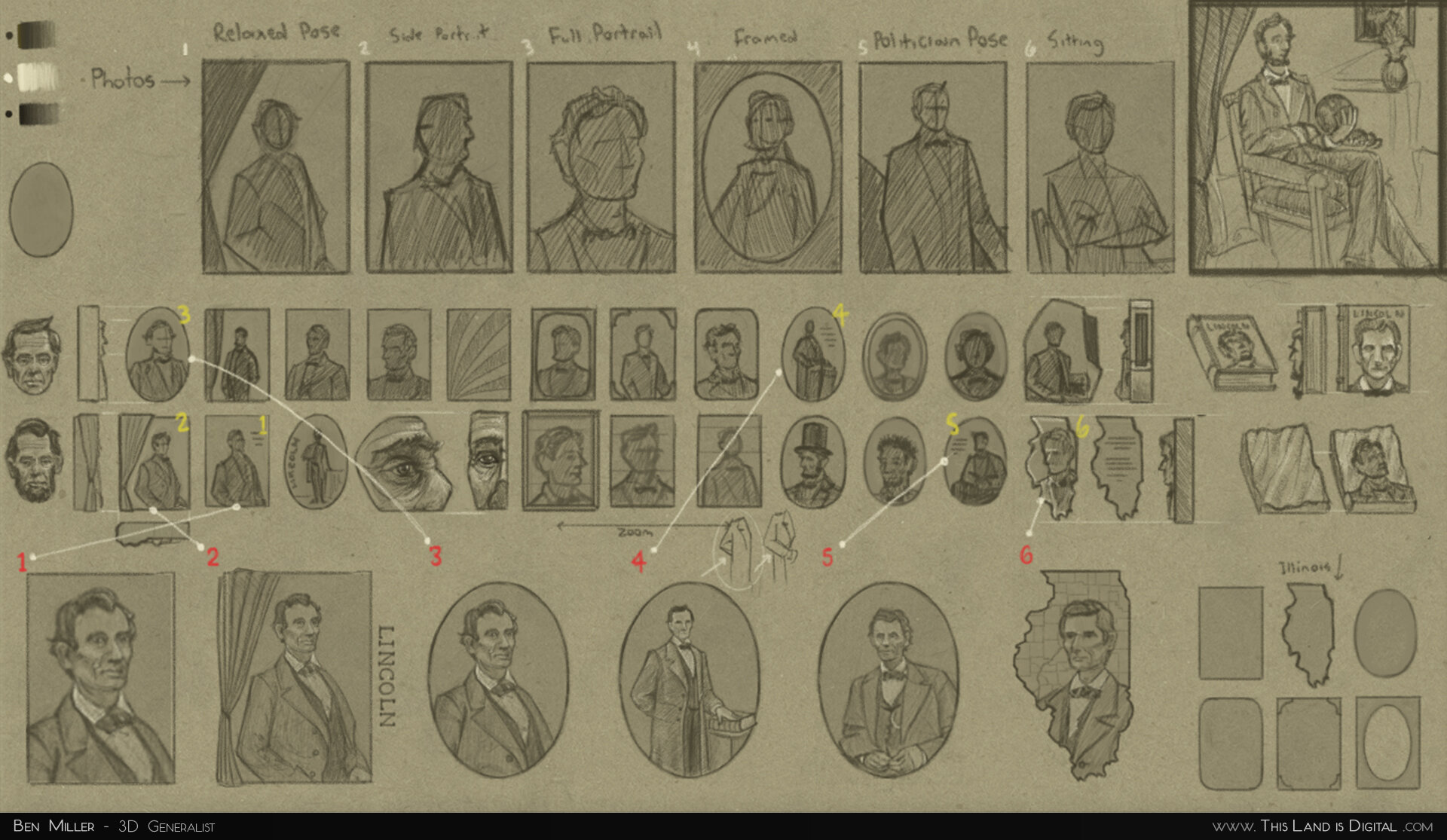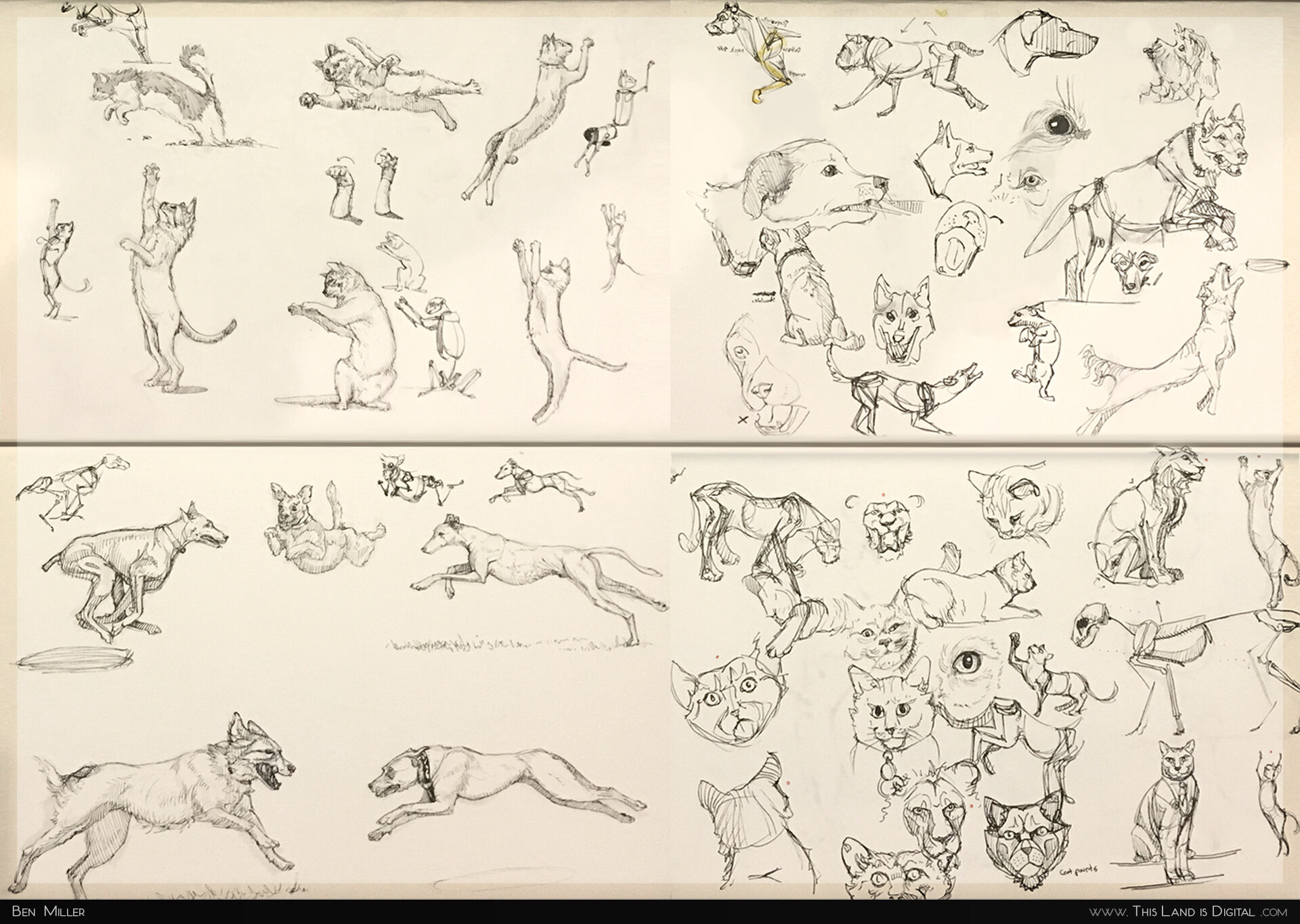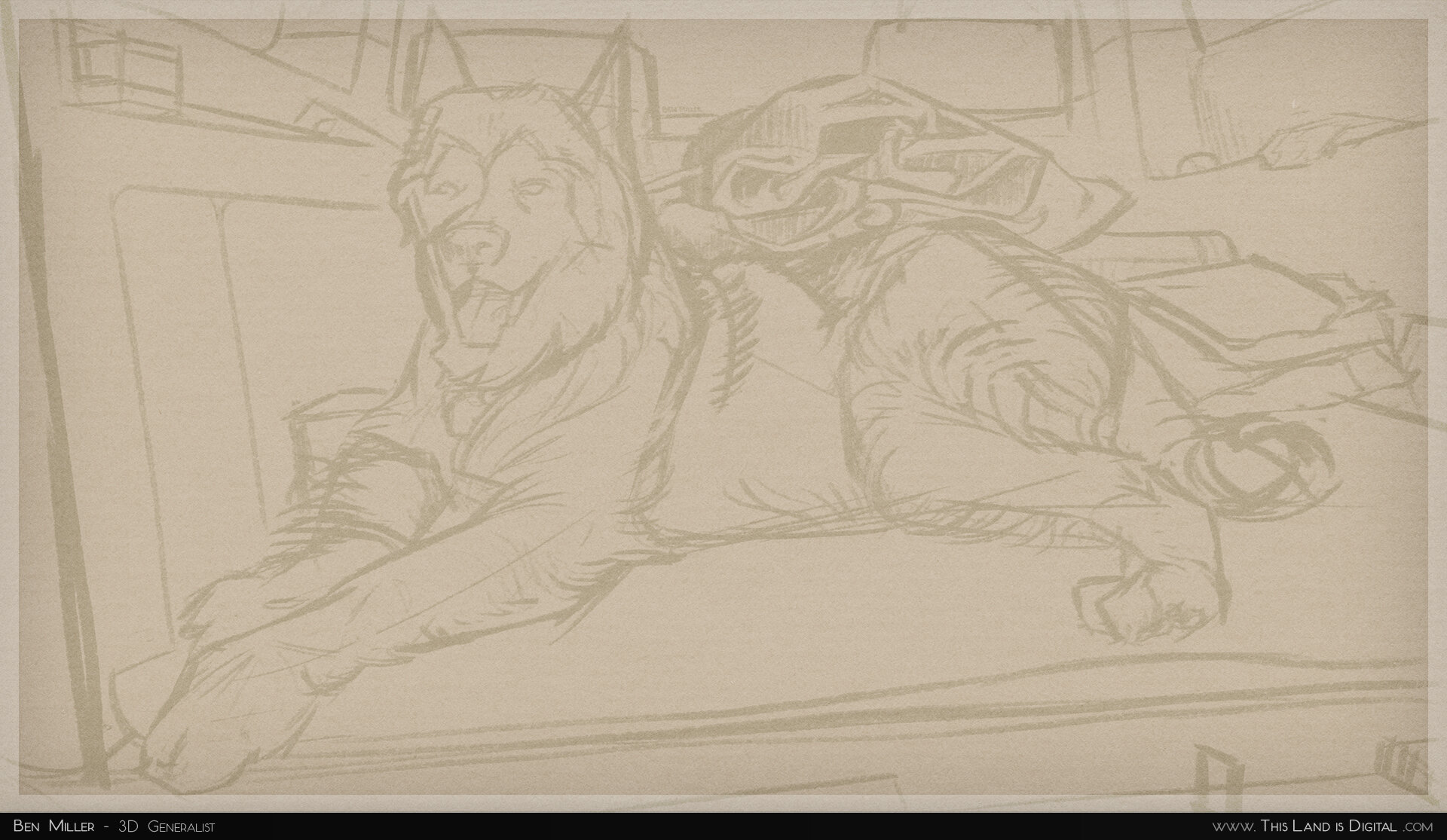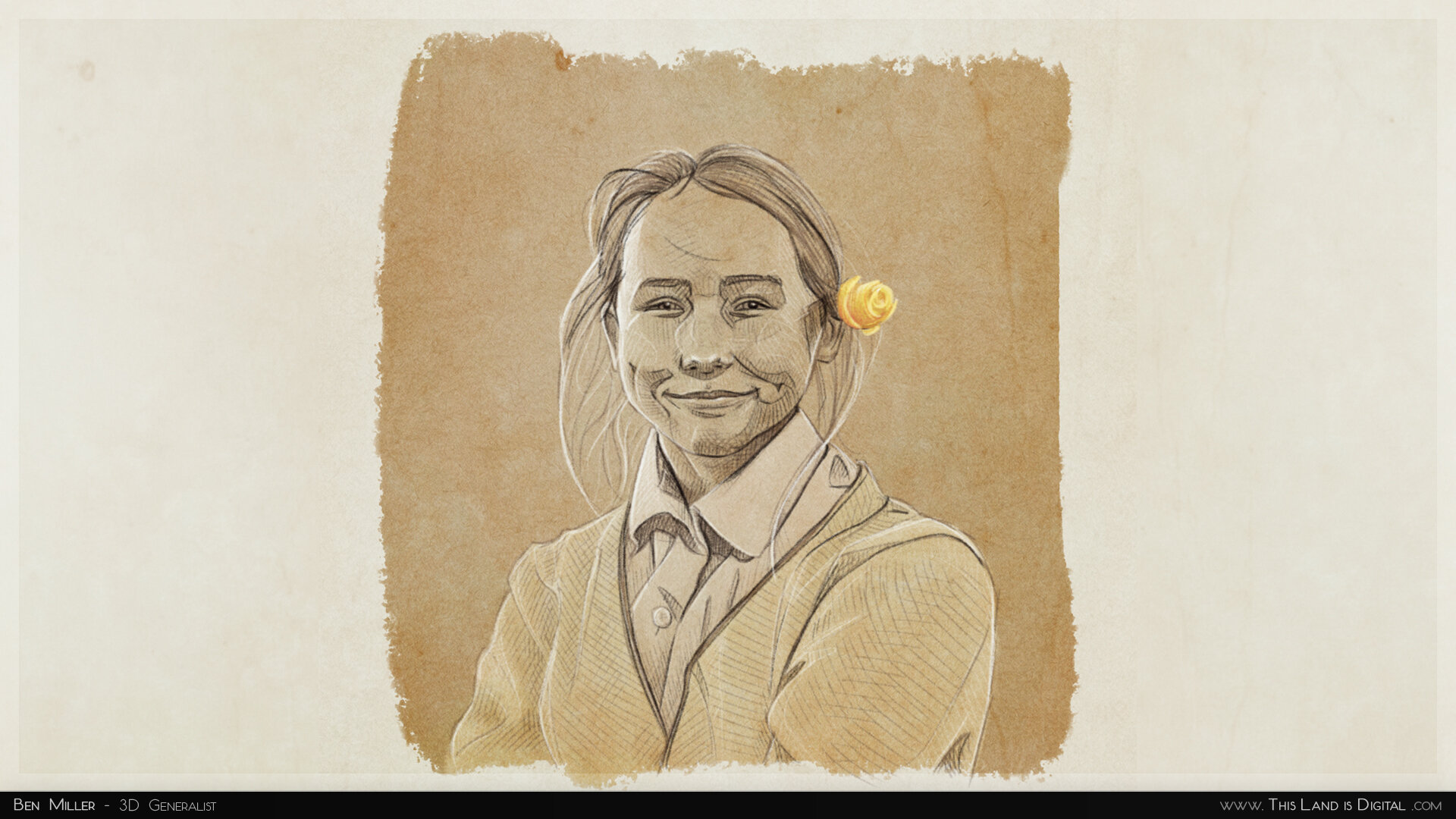Digital Sketches
Learning to draw is a journey for any artist. We each strive in our own way to give the impression that what we do comes naturally to us, all the while questioning the worth of each and every stroke we make.
Design Sketching
To ensure my sketching grows quickly enough to support my 3D work, I begin nearly all of my projects by drawing the subject repeatedly. With each sketch, new details download themselves into my memory until I am able to intuitively recognize the subtle things that truly define the subject’s character. This process helps to lend an informed grace to the postures and proportions of my characters and creatures. when it comes time to model or sculpt them.
Gesture Sketching
Starting over is perhaps the most under-valued tool in an artist’s toolbox. Each time you start over, you keep everything you’ve learned and discard all of your mistakes. Gesture sketching is a means of cultivating this feeling. It pushes you out of your comfort zone and strips away the distracting details that make it harder to create effective forms.
Style Journey
When it comes to my own sketching style, there were a few key developments that helped me get to where I am now. In general, I recognized the parts of my workflow that wasted huge amounts of time for little effort and tried something new.
Switching to pens freed me from my clumsy, ineffective reliance on erasers so that I could learn to actually draw in the first place. Every line was permanent.
Switching to pencils ironically helped me overcome my blocks when working digitally. The perfectly crisp circular brushes in Photoshop were wasting my time, so I replaced the canvas with a paper texture and my brushes with a digital pencil.
Roughing with thick, light strokes allowed me to establish the correct forms and proportions of my drawings before committing to details. This can be seen in the yellow layer beneath many of my gestures. Once the forms are loosely in place, I can refine them with darker strokes.





















